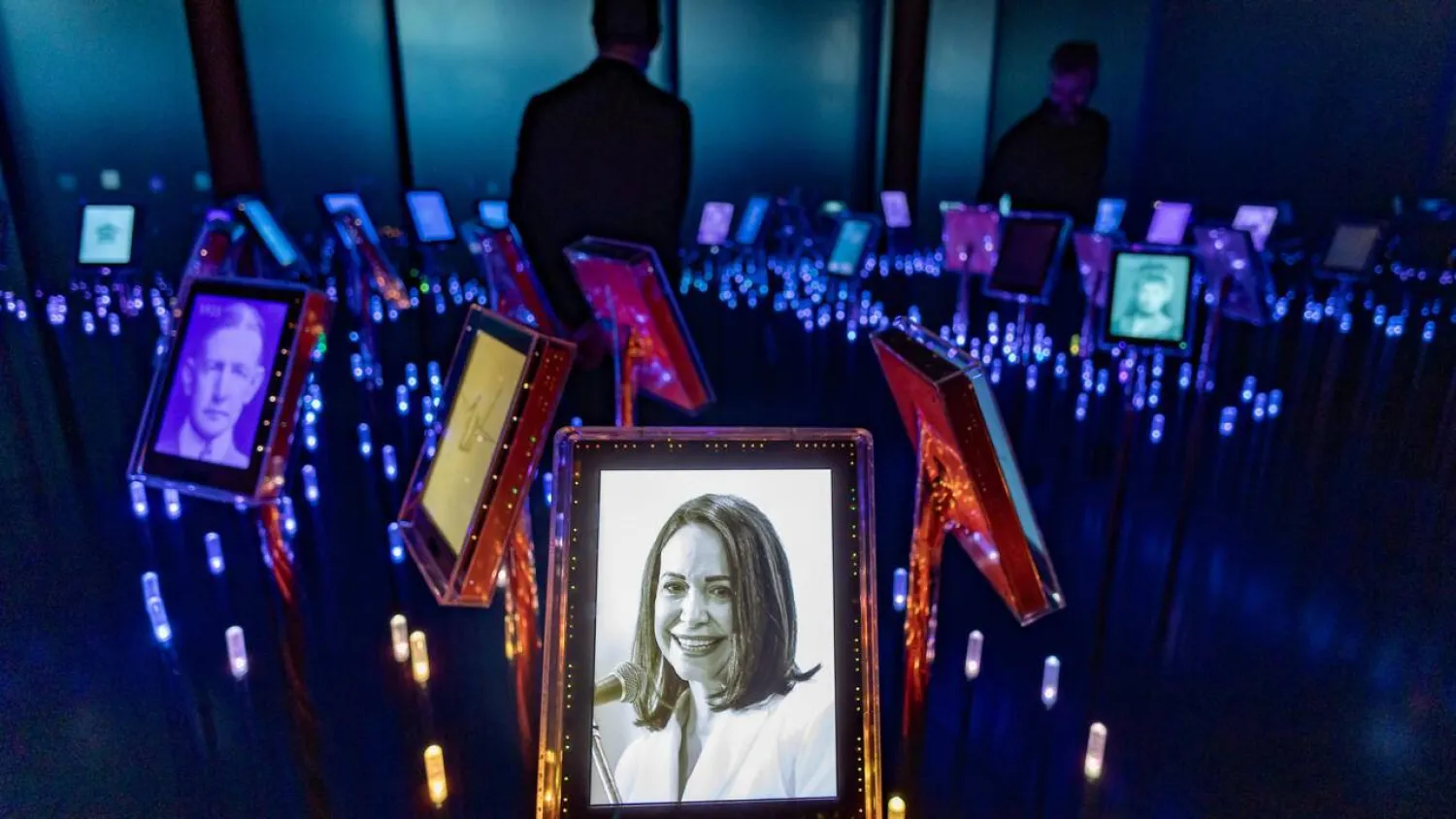Nobel officials delayed a press conference with Peace Prize laureate Maria Corina Machado in Oslo Tuesday, but said they remained confident Venezuela's elusive opposition leader would collect her award in person.
It was not known whether Machado, who has been in hiding since August 2024, was in the city. The Venezuelan government has said it would declare her a "fugitive" if she attends, putting her at risk of arrest if she tries to re-enter the country, AFP reported.
Her family is already in the Norwegian capital and said they hoped she would attend.
The press conference, traditionally held by the prizewinner on the eve of the December 10 award ceremony in Oslo, was expected to be the 58-year-old's first public appearance in 11 months.
In a message to the media early Tuesday, the institute said the press conference was "postponed", without giving a reason for the delay.
"Everything suggests that we will manage to organize a press conference today," Nobel Institute spokesman Erik Aasheim told AFP.
It remained however unclear whether Machado had arrived in Oslo and would be able to accept her award in person on Wednesday.
The chairman of the Norwegian Nobel Committee, Jorgen Watnes Frydnes, told AFP early Tuesday that her presence was "more or less" confirmed.
Machado has accused Venezuelan President Nicolas Maduro of stealing the July 2024 election she was banned from standing in, a claim backed by much of the international community.
She has lived in hiding in Venezuela since August 2024.
She last appeared in public at a demonstration in Caracas on January 9, protesting against Maduro's inauguration for his third term.
The Nobel Peace Prize was awarded to Machado on October 10 for her efforts to bring democracy to Venezuela, challenging the iron-fisted rule of Maduro, who has been president since 2013.
'Fugitive'
Venezuela's attorney general, Tarek William Saab, said last month the opposition leader would be considered a "fugitive" if she travelled to Norway to accept the prize.
"By being outside Venezuela and having numerous criminal investigations, she is considered a fugitive," Saab told AFP, adding she is accused of "acts of conspiracy, incitement of hatred, terrorism."
Venezuelan Interior Minister Diosdado Cabello said Monday he did not know if she would travel to Oslo.
The Nobel prize ceremony will take place on Wednesday at 1:00 pm (1200 GMT) at Oslo's City Hall.
Several members of Machado's family, including her mother, three sisters and daughter, were already in Oslo for the event.
"I would never have imagined it. I had heard and read that she had been nominated" for the award, her mother Corina Parisca de Machado told AFP on Monday, recalling the day her daughter won.
"I thought: 'Caramba! (Wow!) What a wonderful day that would be'," the 84-year-old added.
Several Latin American leaders, including Argentine President Javier Milei -- like Machado, an ally of US President Donald Trump -- were also expected to attend the ceremony.
Seen in Oslo on Monday was Panama's President Jose Raul Mulino, who said he came to "congratulate the hero of democracy and the struggling Venezuelan people" and voiced hope for a "return to democracy in Venezuela as soon as possible".
A large police presence has meanwhile stood guard since Monday outside the Grand Hotel in central Oslo, which traditionally hosts the Nobel Peace Prize laureates, AFP journalists said.
While Machado has been hailed by many for her efforts to bring democracy to Venezuela, she has also been criticized by others for aligning herself with Trump, to whom she has dedicated her Nobel Prize.
The Oslo ceremony coincides with a large US military build-up in the Caribbean in recent weeks and deadly strikes on what Washington says are drug smuggling boats.
Maduro insists that the real goal of the US operations -- which Machado has said are justified -- is to topple the government and seize Venezuela's oil reserves.
If Machado does come to Norway to accept her prize, the question then arises of how she would re-enter Venezuela.










